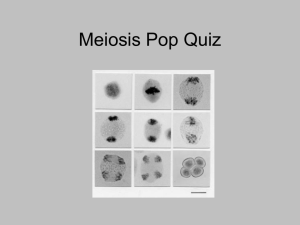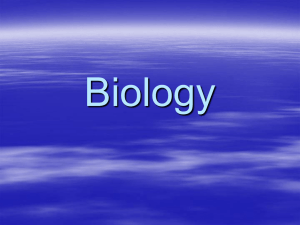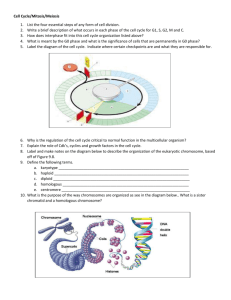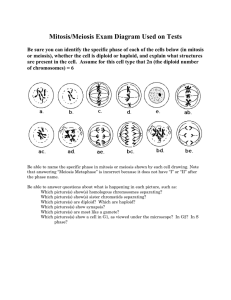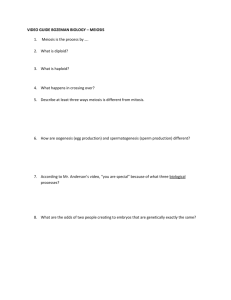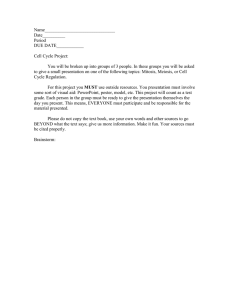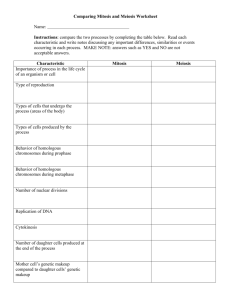Chapter 13 Meiosis and Sexual Life Cycles
advertisement
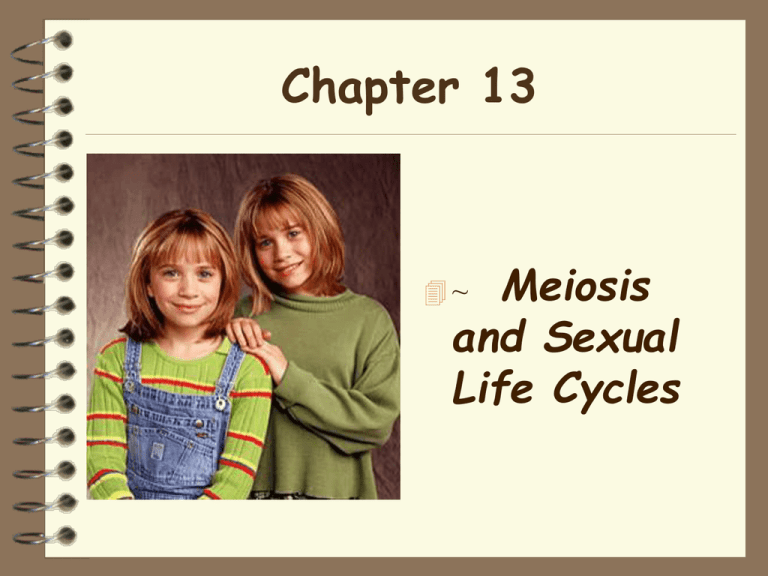
Chapter 13 Meiosis and Sexual Life Cycles ~ Heredity Heredity: the transmission of traits from one generation to the next Asexual reproduction: clones Sexual reproduction: variation Human life cycle: • 23 pairs of homologous chromosomes (46); • 1 pair of sex and 22 pairs of autosomes; • karyotype; • gametes are haploid (1N)/ all other cells are diploid (2N); •fertilization (syngamy) results in a zygote Meiosis: cell division to produce haploid gametes Alternative life cycles Fungi/some algae •meiosis produces 1N cells that divide by mitosis to produce 1N adults (gametes by mitosis) Plants/some algae •Alternation of generations: 2N sporophyte, by meiosis, produces 1N spores; spore divides by mitosis to generate a 1N gametophyte; gametes then made by mitosis which then fertilize into 2N sporophyte Meiosis Preceded by chromosome replication, but is followed by 2 cell divisions (Meiosis I & Meiosis II) 4 daughter cells; 1/2 chromosome number (1N); variation Meiosis vs. mitosis Synapsis/tetrad/chiasmata (prophase I) Homologous vs. individual chromosomes (metaphase I) Sister chromatids do not separate (anaphase I) Meiosis I separates homologous pairs of chromosomes, not sister chromatids of individual chromosomes. Origins of Genetic Variation, I Independent assortment: homologous pair of chromosomes position and orient randomly (metaphase I) and nonidentical sister chromatids during meiosis II Combinations possible: 2 n ; with n the haploid number of the organism Origins of Genetic Variation, II Crossing over (prophase I): • the reciprocal exchange of genetic material between nonsister chromatids during synapsis of meiosis I (recombinant chromosomes) Random fertilization: • 1 sperm (1 of 8 million possible chromosome combinations) x 1 ovum (1 of 8 million different possibilities) = 64 trillion diploid combinations!
